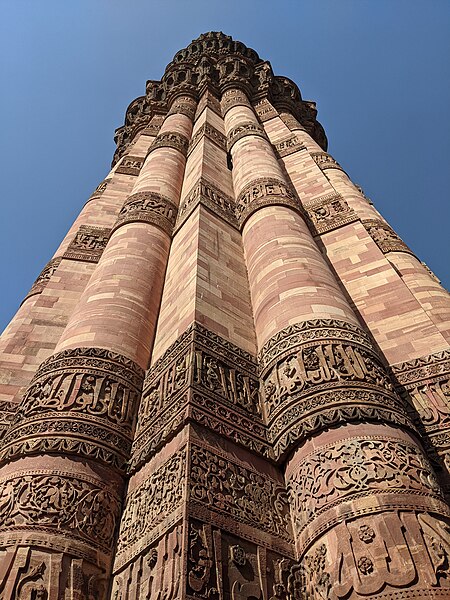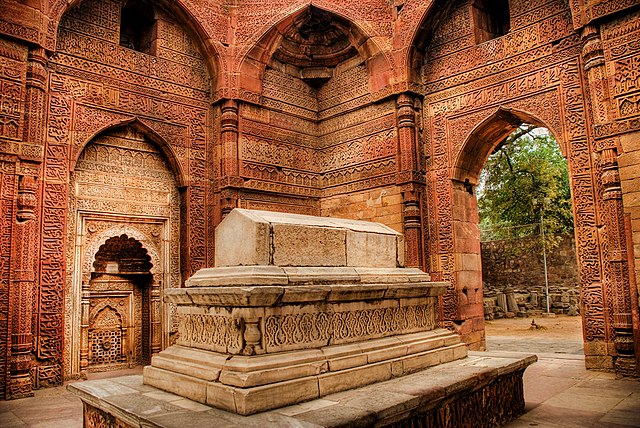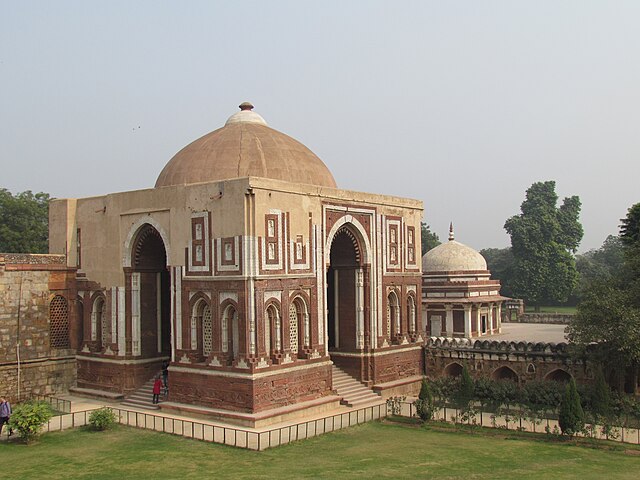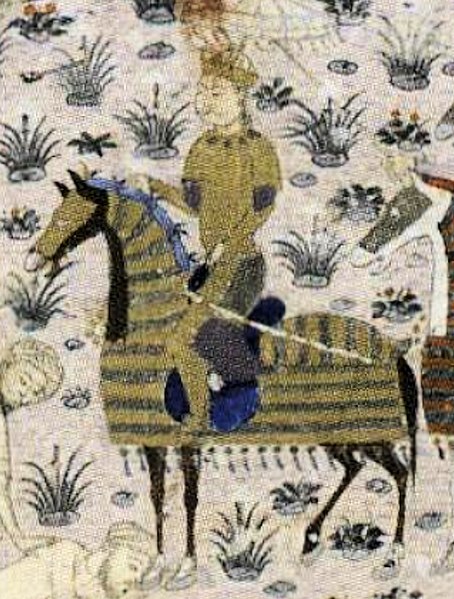The Mamluk dynasty, also known as Slave dynasty, was a dynasty which ruled Delhi Sultanate from 1206 to 1290. It was the first of five largely unrelated dynasties to rule the Delhi Sultanate until 1526. Before the establishment of the Mamluk dynasty, Qutb al-Din Aibak's tenure as a Ghurid dynasty administrator lasted from 1192 to 1206, a period during which he led forays into the Gangetic plain and established control over some of the new areas.
Base with inscriptions
Gold coin of Ghiyath al-Din 'Iwad, Governor of Bengal (AH 614–616 AD 1217–1220). Struck in the name of Shams al-Din Iltutmish, Sultan of Dehli.
Tomb of Iltutmish (r. 1211–1236) in the Qutub Minar complex.
Empty
The Delhi Sultanate or the Sultanate of Delhi was a late medieval empire primarily based in Delhi that stretched over large parts of the Indian subcontinent, for 320 years (1206–1526). Following the invasion of South Asia by the Ghurid dynasty, five dynasties ruled over the Delhi Sultanate sequentially: the Mamluk dynasty (1206–1290), the Khalji dynasty (1290–1320), the Tughlaq dynasty (1320–1414), the Sayyid dynasty (1414–1451), and the Lodi dynasty (1451–1526). It covered large swaths of territory in modern-day India, Pakistan, and Bangladesh as well as some parts of southern Nepal.
Tomb of Iltutmish (r. 1211–1236) in the Qutub Minar complex.
The Khaljis captured Jaisalmer Fort in Jaisalmer, Rajputana, in 1299.
The Alai Darwaza, completed in 1311 during the Khalji dynasty.
Depiction of Ghiyath al-Din Tughluq, founder of the Tughlaq dynasty, in the Basātin al-uns by Ikhtisān-i Dabir, a member of the Tughluq court and an ambassador to Iran. Ca.1410 Jalayirid copy of 1326 lost original.







